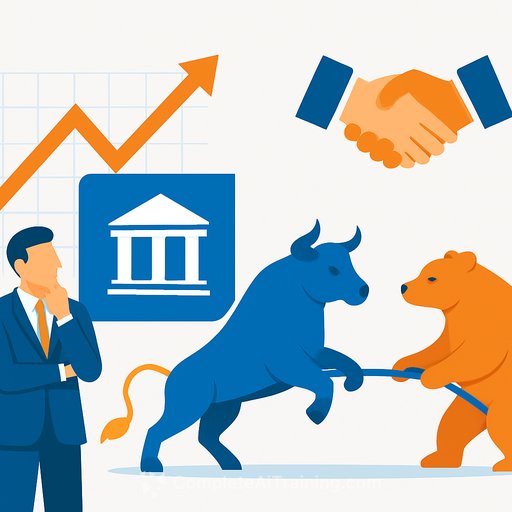The ROI of Resilience: Supply Chains, Finance and AI
Supply chains expose weak points. Finance absorbs the impact. If you sit in the CFO seat, carbon totals alone don't guide capital allocation, cost control, or margin defense.
The shift is simple to state and hard to execute: bring decision-grade sustainability data into the same systems that run profit centers, cost centers, and balance sheets.
Where disruptions hit your P&L
A weather event, supplier outage, or policy change shows up as delayed revenue, higher cost of goods sold, inventory write-downs, or insurance pressure. Resilience becomes a financial strategy, not a CSR talking point.
The target: reduce volatility in cash flow and margins by linking operational risk signals to finance processes in real time.
From proxy data to decision-grade numbers
Many disclosures still rely on proxy data and industry averages, with deviations of 30-40% from actuals. That gap erodes forecasts, hedges, and pricing decisions.
- Spend-based factors blur product-level profitability.
- Siloed ESG tools break audit trails and slow close cycles.
- Inconsistent scopes and boundaries distort risk exposure.
- Supplier self-reports without controls inflate confidence.
Integrate sustainability into core finance
The core question: "How do we integrate sustainability data into the same systems that manage profit centers, cost centers, and balance sheets?" Pull the data into your chart of accounts, cost accounting, and consolidation flows so it moves with money.
SAP Green Ledger brings granular carbon insights into core finance processes. That lets teams drive decarbonization at scale and see how emissions affect risk exposure and margins at the level where decisions are made.
What CFOs can do this quarter
- Define scopes, boundaries, and material categories using the GHG Protocol; lock them in your accounting policies.
- Add carbon as a dimension in cost accounting (by SKU, plant, route, and supplier tier) to expose true cost-to-serve.
- Map emissions to financial KPIs: gross margin, working capital days, WACC, and insurance premiums.
- Introduce an internal carbon price for planning and transfer pricing; track margin at risk by business unit.
- Automate supplier data capture with controls; require primary data for top spend and high-intensity categories.
- Embed sustainability metrics in S&OP, procurement scorecards, and treasury risk dashboards.
- Prepare for assurance with clear audit trails from source data to disclosures and the financial close.
AI's role in finance-grade sustainability
- Close data gaps: estimate item-level emissions with machine learning where primary data is missing, flag anomalies, and prioritize supplier outreach.
- Scenario planning: simulate carbon price paths and policy shocks on margins, capex, and inventory strategy.
- Data extraction: use AI to parse supplier PDFs and portals into structured records with confidence scores.
- Controls: log models, inputs, and overrides for auditability; restrict use to explainable models for regulated reporting.
Metrics that move decisions
- Carbon intensity by product, customer, and route.
- Margin at risk per unit at various carbon price levels.
- Percentage of spend covered by primary supplier data.
- Inventory and logistics emissions per dollar of revenue.
- Supplier resilience score (lead time, disruption history, emissions trend).
Bottom line
Resilience shows up in cash, cost, and confidence. Bring sustainability signals into core finance, improve data quality, and tie actions to margin and risk. That's how supply chain shocks turn into controlled outcomes instead of surprises.
Your membership also unlocks:






